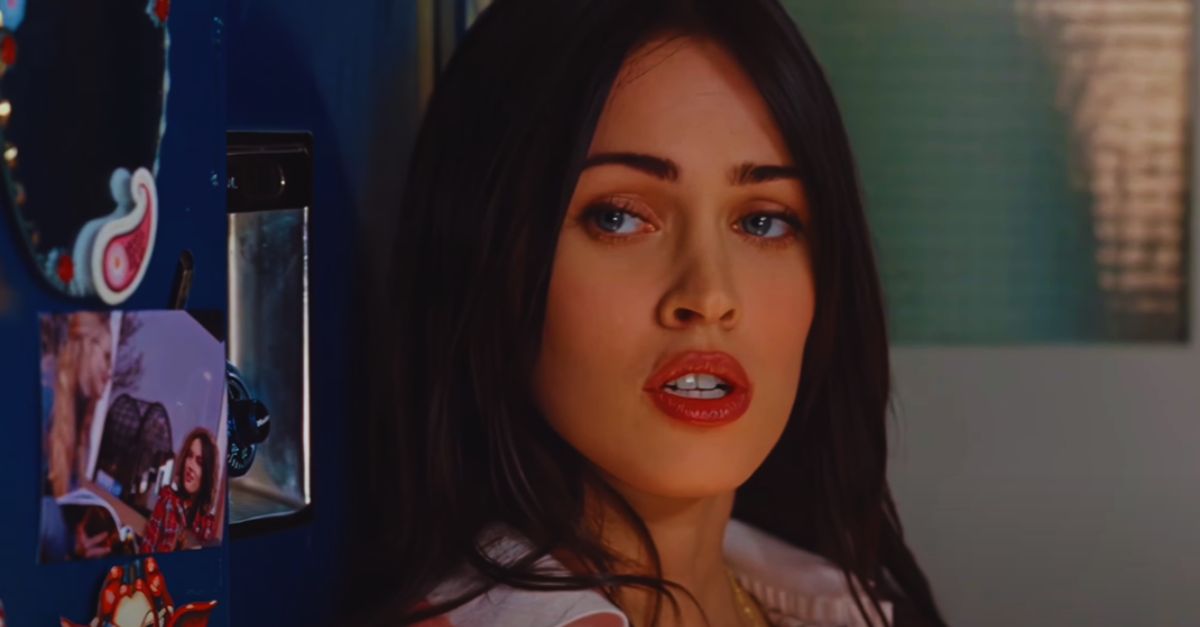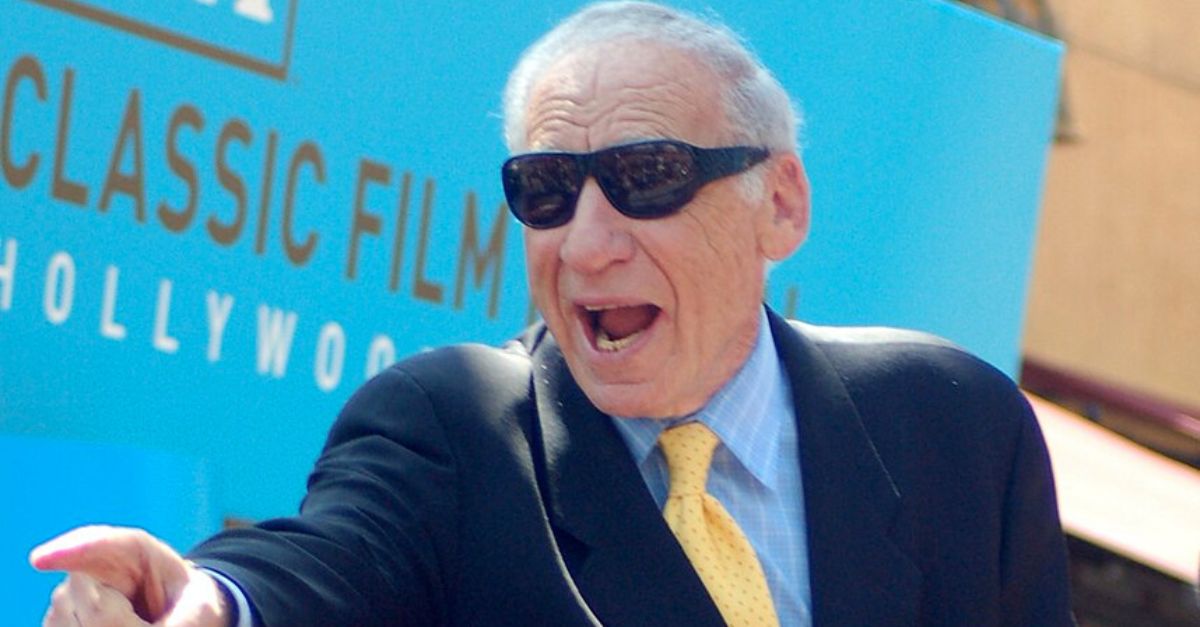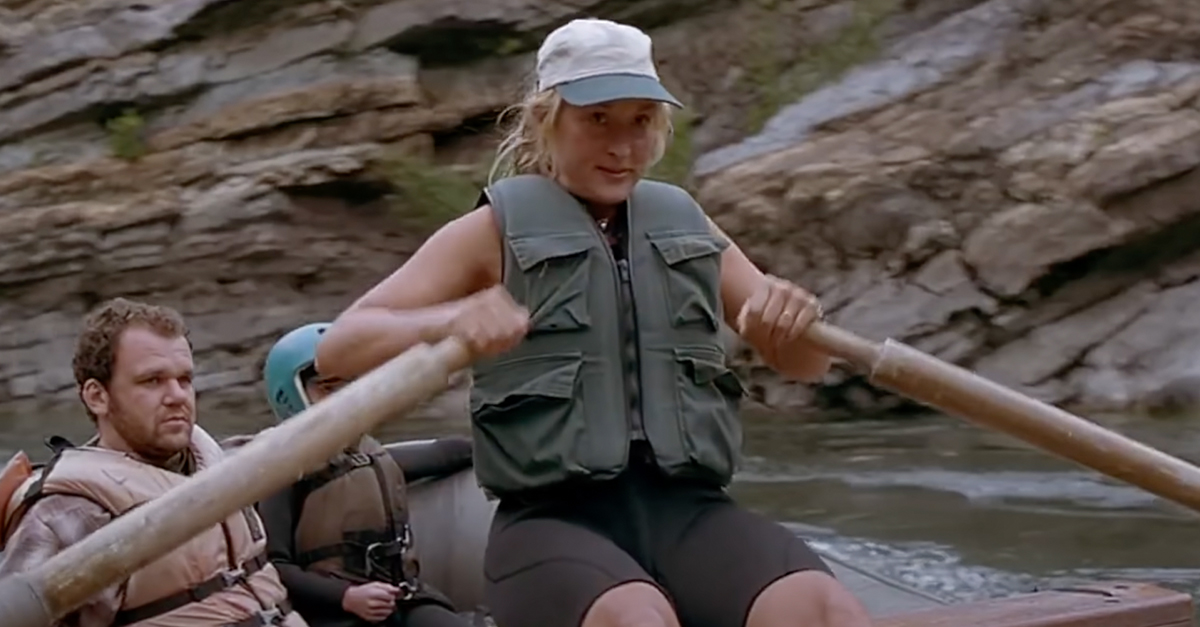Box Office Strugglers
Every so often, a good film fails to connect in its own time. It lingers, waiting patiently for people to catch up. What seemed strange or flawed then now feels sharp, moving, and timeless.
It's a Wonderful Life (1946)
Frank Capra's heartwarming Christmas classic actually lost RKO Pictures approximately $525,000 during its initial release. The film's performance was so devastating that it contributed to the downfall of Liberty Films, Capra's independent production company, forcing him back into the studio system he'd fought to escape.
 RKO Radio Pictures, It’s a Wonderful Life (1946)
RKO Radio Pictures, It’s a Wonderful Life (1946)
It's a Wonderful Life (1946) (Cont.)
What makes this failure even more bizarre is that the movie received five Academy Award nominations. Despite its initial failure, the movie became a beloved Christmas classic, thanks in part to its entry into the public domain in 1974, which allowed for widespread TV broadcasts.
 RKO Radio Pictures, It’s a Wonderful Life (1946)
RKO Radio Pictures, It’s a Wonderful Life (1946)
Dredd (2012)
Karl Urban never once removed his helmet during the entire 95-minute runtime—a decision that perfectly honored the source comic but probably confused marketing executives who couldn't sell movie tickets with a recognizable face. This dedication to authenticity extended throughout the movie.
Dredd (2012) (Cont.)
The $50 million production earned only $41.5 million globally, making it one of 2012's biggest commercial disappointments. Much of the blame fell on the lingering stigma from 1995's Judge Dredd, where Sylvester Stallone spent most of the film helmet-less, eliminating the character's mysterious appeal.
The Thing (1982)
Blood tests, flamethrowers, and a paranoid Kurt Russell. John Carpenter's masterpiece of mistrust earned only $19.6 million, crashing spectacularly in summer 1982. The film's practical effects, created by Rob Bottin, were so disturbingly realistic that audiences literally walked out of theaters.
 Universal Pictures, The Thing (1982)
Universal Pictures, The Thing (1982)
The Thing (1982) (Cont.)
Additionally, the timing couldn't have been worse. Opening the same weekend as E.T., The Thing represented everything Spielberg's film wasn't—cold, nihilistic, and brutally violent. Critics called it "a great barf-bag movie," misunderstanding Carpenter's brilliant Cold War allegory about the breakdown of human trust.
 Universal Pictures, The Thing (1982)
Universal Pictures, The Thing (1982)
Jennifer's Body (2009)
The marketing campaign for Jennifer's Body was a masterclass in missing the point. It focused entirely on Megan Fox's desirability rather than Diablo Cody's razor-sharp feminist commentary on male toxicity and female friendship. Trailers made it look like a generic supernatural thriller.
 20th Century Fox, Jennifer’s Body (2009)
20th Century Fox, Jennifer’s Body (2009)
Jennifer's Body (2009) (Cont.)
It managed to collect only $31.6 million against its $16 million budget. What people failed to recognize was that Cody had crafted a brilliant metaphor about the literal consumption of female bodies, wrapped in the package of a demon possession story.
 20th Century Fox, Jennifer’s Body (2009)
20th Century Fox, Jennifer’s Body (2009)
Children Of Men (2006)
Alfonso Cuaron's dystopian masterpiece features some of cinema's most technically stunning long takes, including a six-minute single-shot car ambush that required months of planning and custom-built camera rigs. The problem wasn't quality but accessibility. Children of Men presents an unrelentingly bleak vision of humanity's future.
 Universal Pictures, Children of Men (2006)
Universal Pictures, Children of Men (2006)
Children Of Men (2006) (Cont.)
Here, women have mysteriously stopped giving birth. Audiences found the film's hopelessness emotionally exhausting, even though critics recognized it as a profound meditation on faith, immigration, and societal collapse. Today, those prescient themes about refugee crises and authoritarian governments have only grown more relevant.
 Universal Pictures, Children of Men (2006)
Universal Pictures, Children of Men (2006)
Punch-Drunk Love (2002)
"I have a love in my life that makes me stronger than anything you can imagine"—this wasn't the Adam Sandler audiences expected in 2002. The movie left fans confused, who came for Billy Madison-style laughs and instead found a deeply psychological romance about loneliness and rage.
 Columbia Pictures, Punch-Drunk Love (2002)
Columbia Pictures, Punch-Drunk Love (2002)
Punch-Drunk Love (2002) (Cont.)
Blame its marketing disaster, which stemmed from impossible positioning: how do you sell an Adam Sandler movie that's actually about emotional vulnerability and mental health? Anderson extracted a genuinely powerful performance from Sandler, proving the comedian could handle serious dramatic material years before Uncut Gems.
 Columbia Pictures, Punch-Drunk Love (2002)
Columbia Pictures, Punch-Drunk Love (2002)
The Big Lebowski (1998)
The Dude abides, but audiences didn't initially. The Coen Brothers' stoner noir flick only managed to bring in about $17.4 million at the box office. Critics weren't too kind either, often saying it didn’t hold a candle to their earlier hit, Fargo.
 Gramercy Pictures, The Big Lebowski (1998)
Gramercy Pictures, The Big Lebowski (1998)
The Big Lebowski (1998) (Cont.)
Peter Howell wrote, "It's hard to believe that this is the work of a team that won an Oscar last year," entirely missing the movie's deliberate subversion of detective story conventions. What seemed like a meandering, pointless plot was actually a superb deconstruction of film noir tropes.
 Gramercy Pictures, The Big Lebowski (1998)
Gramercy Pictures, The Big Lebowski (1998)
Clue (1985)
Three different endings were screened simultaneously across different theaters. Talk about a marketing gimmick that should have been revolutionary, but instead confused everyone in 1985. Paramount Pictures' bold experiment with multiple endings meant moviegoers had no idea which version they'd see.
 Paramount Pictures, Clue (1985)
Paramount Pictures, Clue (1985)
Clue (1985) (Cont.)
The concept was decades ahead of its time. It emerged in an era before social media could capitalize on the technique as viral marketing gold. Director Jonathan Lynn's rapid-fire dialogue and ensemble cast delivered one of the wittiest murder mysteries ever filmed.
 Paramount Pictures, Clue (1985)
Paramount Pictures, Clue (1985)
Zodiac (2007)
David Fincher spent over $65 million crafting Zodiac, only to watch Paramount dump it into theaters with a March release date. The film's methodical pacing and lack of resolution frustrated folks expecting a typical serial killer thriller with clear answers and cathartic justice.
 Paramount Pictures, Zodiac (2007)
Paramount Pictures, Zodiac (2007)
Zodiac (2007) (Cont.)
We got a meditation on obsession itself, following Jake Gyllenhaal's cartoonist as he spirals deeper into the unsolved case. Zodiac’s reputation has only grown stronger with time, as viewers came to appreciate its authentic portrayal of investigative journalism and the psychological toll of chasing shadows.
 Paramount Pictures, Zodiac (2007)
Paramount Pictures, Zodiac (2007)
The Shawshank Redemption (1994)
Nobody knew what a "Shawshank" was, and that title confusion arguably cost the movie millions at the box office. Tim Robbins later joked that people approached him for years, saying they loved him in "Scrimshaw Reduction" or "Shimmy Shimmy Shake," proving the title's memorability problem was real.
 Columbia Pictures, The Shawshank Redemption (1994)
Columbia Pictures, The Shawshank Redemption (1994)
The Shawshank Redemption (1994) (Cont.)
In spite of seven Academy Award nominations and widespread critical praise, it earned only $16 million during its initial theatrical run against a $25 million budget. Castle Rock Entertainment's prison drama faced stiff competition from Forrest Gump and Pulp Fiction, two cultural juggernauts.
 Columbia Pictures, The Shawshank Redemption (1994)
Columbia Pictures, The Shawshank Redemption (1994)
Tank Girl (1995)
Lori Petty's punk rock post-apocalyptic warrior arrived in theaters looking like she'd raided a costume shop and stolen a comic book's art style. Well, this was exactly the part that viewers missed. The $25 million adaptation of Jamie Hewlett and Alan Martin's underground comic was a commercial disaster.
 United Artists, Tank Girl (1995)
United Artists, Tank Girl (1995)
Tank Girl (1995) (Cont.)
Director Rachel Talalay fought constantly with MGM executives who wanted to sanitize the source material's anarchic spirit and sexual frankness. The studio's interference resulted in a compromised vision that satisfied neither mainstream audiences nor comic book fans, though Talalay's punk aesthetic crafted something unique.
 United Artists, Tank Girl (1995)
United Artists, Tank Girl (1995)
John Carter (2012)
This film was marketed simply as "Disney's John Carter," failing to leverage the Edgar Rice Burroughs legacy or the creative pedigree of director Andrew Stanton. The trailers and ads did not effectively convey the story or its unique sci-fi/fantasy appeal, resulting in confusion or disinterest.
 Walt Disney Studios Motion Pictures, John Carter (2012)
Walt Disney Studios Motion Pictures, John Carter (2012)
John Carter (2012) (Cont.)
Most enthusiasts now praise its creativity, world-building, and unique take on the source material by Edgar Rice Burroughs. For instance, Glenn Kenny (MSN Movies) gave it 4/5 stars, praising the payoff of the complex narrative and calling it a movie he'd watch multiple times.
 Walt Disney Studios Motion Pictures, John Carter (2012)
Walt Disney Studios Motion Pictures, John Carter (2012)
Office Space (1999)
Mike Judge's workplace satire should have been a guaranteed hit. After all, the creator of Beavis and Butt-Head was directing a comedy about corporate hell, starring a cast that included Jennifer Aniston. Instead, 20th Century Fox's $10 million investment returned only $10.8 million domestically.
 20th Century Fox, Office Space (1999)
20th Century Fox, Office Space (1999)
Office Space (1999) (Cont.)
Deadpan humor and realistic portrayal of cubicle life proved too close to home for many, who found watching Peter Gibbons' existential crisis more depressing than funny. Fox's marketing department struggled to position the film, eventually focusing on Aniston's presence rather than Judge's satirical brilliance.
 20th Century Fox, Office Space (1999)
20th Century Fox, Office Space (1999)
Beau Is Afraid (2023)
Three hours of pure anxiety made flesh. Ari Aster's surreal creation became one of A24's notable commercial flops despite Joaquin Phoenix's committed lead acting. The film follows a man who is paralyzed by the everyday terrors of modern life, from crossing streets to calling his mother.
Beau Is Afraid (2023) (Cont.)
People were caught off guard when they thought they were getting another Hereditary or Midsommar. In reality, the film delves into abstract themes about motherhood issues and men's feelings of inadequacy. Critics split between calling it brilliant psychological horror and self-indulgent pretension, but general moviegoers stayed away.
Kingpin (1996)
Roy Munson's rubber hand and tragic backstory made bowling cool for exactly one movie, after which audiences largely ignored it. The Farrelly Brothers' $27 million sports comedy earned just $25.2 million, nearly derailing their hot streak between Dumb and Dumber and There's Something About Mary.
 Metro-Goldwyn-Mayer (MGM), Kingpin (1996)
Metro-Goldwyn-Mayer (MGM), Kingpin (1996)
Kingpin (1996) (Cont.)
The film's darker tone didn't sit too well. Ernie McCracken delivered career-best sleazy charm, while the Amish bowler Ishmael provided unexpected heart to the proceedings. The bowling setting felt too niche for mainstream audiences, even though the sport's working-class authenticity provided perfect comedic fodder.
 Metro-Goldwyn-Mayer (MGM), Kingpin (1996)
Metro-Goldwyn-Mayer (MGM), Kingpin (1996)
Blade Runner (1982)
It is said that Harrison Ford hated the voice-over narration so much that he deliberately delivered it badly, hoping to sabotage what he considered unnecessary exposition. Unfortunately, his plan backfired. Scott's deliberate pacing and philosophical questions about artificial consciousness proved too cerebral.
 Warner Bros. Pictures, Blade Runner (1982)
Warner Bros. Pictures, Blade Runner (1982)
Blade Runner (1982) (Cont.)
All those multiple cuts—theatrical, director's, final—became legendary among cinephiles, but initial viewers left theaters baffled by its ambiguous ending and uncertain whether Deckard himself was a replicant. Blade Runner's influence on cyberpunk aesthetics and science fiction cinema became apparent only years later.
 Warner Bros. Pictures, Blade Runner (1982)
Warner Bros. Pictures, Blade Runner (1982)
Southland Tales (2006)
Southland Tales is a complex dystopian black comedy thriller set in a chaotic near-future Los Angeles in 2008, where nuclear attacks and global warfare have plunged the US into hysteria. Kelly's follow-up to Donnie Darko was meant to be the ultimate multimedia experience.
 Samuel Goldwyn Films, Southland Tales (2006)
Samuel Goldwyn Films, Southland Tales (2006)
Southland Tales (2006) (Cont.)
Critics called it "incoherent and unpolished," misunderstanding Kelly's prescient satire of surveillance states, corporate manipulation, and reality television culture. The film's 144-minute runtime, packed with musical numbers, time travel, and purposely disorienting tonal shifts, overwhelmed those expecting a straightforward sci-fi experience.
 Samuel Goldwyn Films, Southland Tales (2006)
Samuel Goldwyn Films, Southland Tales (2006)
Miami Vice (2006)
Digital cameras replaced film stock in Michael Mann's $135 million reimagining of his own television series, crafting unprecedented visual realism that viewers dismissed as style over substance. Mann traded the show's iconic pastel aesthetic for grainy surveillance footage textures and handheld intimacy.
 Universal Pictures, Miami Vice (2006)
Universal Pictures, Miami Vice (2006)
Miami Vice (2006) (Cont.)
Colin Farrell and Jamie Foxx's Miami cops inhabit a morally ambiguous world where identity becomes fluid and violence feels genuinely dangerous. Mann's revolutionary approach to action filmmaking influenced an entire generation of directors. However, mainstream audiences rejected its cerebral approach to genre conventions.
 Universal Pictures, Miami Vice (2006)
Universal Pictures, Miami Vice (2006)
Showgirls (1995)
Paul Verhoeven earned a Razzie for Worst Director while simultaneously bringing to life one of cinema's highly misunderstood satirical masterpieces—a $45 million NC-17 epic that was dismissed as exploitative trash. Elizabeth Berkley's powerhouse performance as Nomi Malone was ridiculed for its intensity.
 Metro-Goldwyn-Mayer, Showgirls (1995)
Metro-Goldwyn-Mayer, Showgirls (1995)
Showgirls (1995) (Cont.)
Reviewers also overlooked Verhoeven's deliberate critique of American capitalism and female ambition. The film's camp aesthetic and over-the-top dialogue were intentional choices. Verhoeven's track record with RoboCop and Total Recall should have signaled his satirical intentions, but folks took everything at face value.
 Metro-Goldwyn-Mayer, Showgirls (1995)
Metro-Goldwyn-Mayer, Showgirls (1995)
Babylon (2022)
Elephant defecation opens Babylon. Such a bold choice immediately signaled this wouldn't be another romanticized industry love letter. The three-hour runtime and deliberately grotesque depiction of Tinseltown's golden age overwhelmed movie-goers expecting La La Land's whimsical nostalgia. It starred Margot Robbie.
 Paramount Pictures, Babylon (2022)
Paramount Pictures, Babylon (2022)
Babylon (2022) (Cont.)
Chazelle dissected cinema's relationship with excess, ambition, and artistic integrity through a lens of decadent parties and moral decay. The movie's unflinching portrayal of Hollywood's dark underbelly, complete with graphic imagery and brutal character arcs, challenged the conventions of period filmmaking.
 Paramount Pictures, Babylon (2022)
Paramount Pictures, Babylon (2022)
Speed Racer (2008)
The Wachowski siblings had just revolutionized cinema with The Matrix trilogy, so when they announced their next project would be a live-action Speed Racer adaptation, expectations were sky-high. Despite its $120 million budget and amazing visual effects, Speed Racer grossed $93.9 million worldwide.
 Warner Bros. Pictures, Speed Racer (2008)
Warner Bros. Pictures, Speed Racer (2008)
Speed Racer (2008) (Cont.)
Marketing confusion that tried to appeal excessively to both nostalgic adults and children ultimately alienated both groups. Critics dismissed it as "all style, no substance," missing the point entirely. Speed Racer was, in fact, a deliberate homage to anime aesthetics and Saturday morning cartoons.
 Warner Bros. Pictures, Speed Racer (2008)
Warner Bros. Pictures, Speed Racer (2008)









